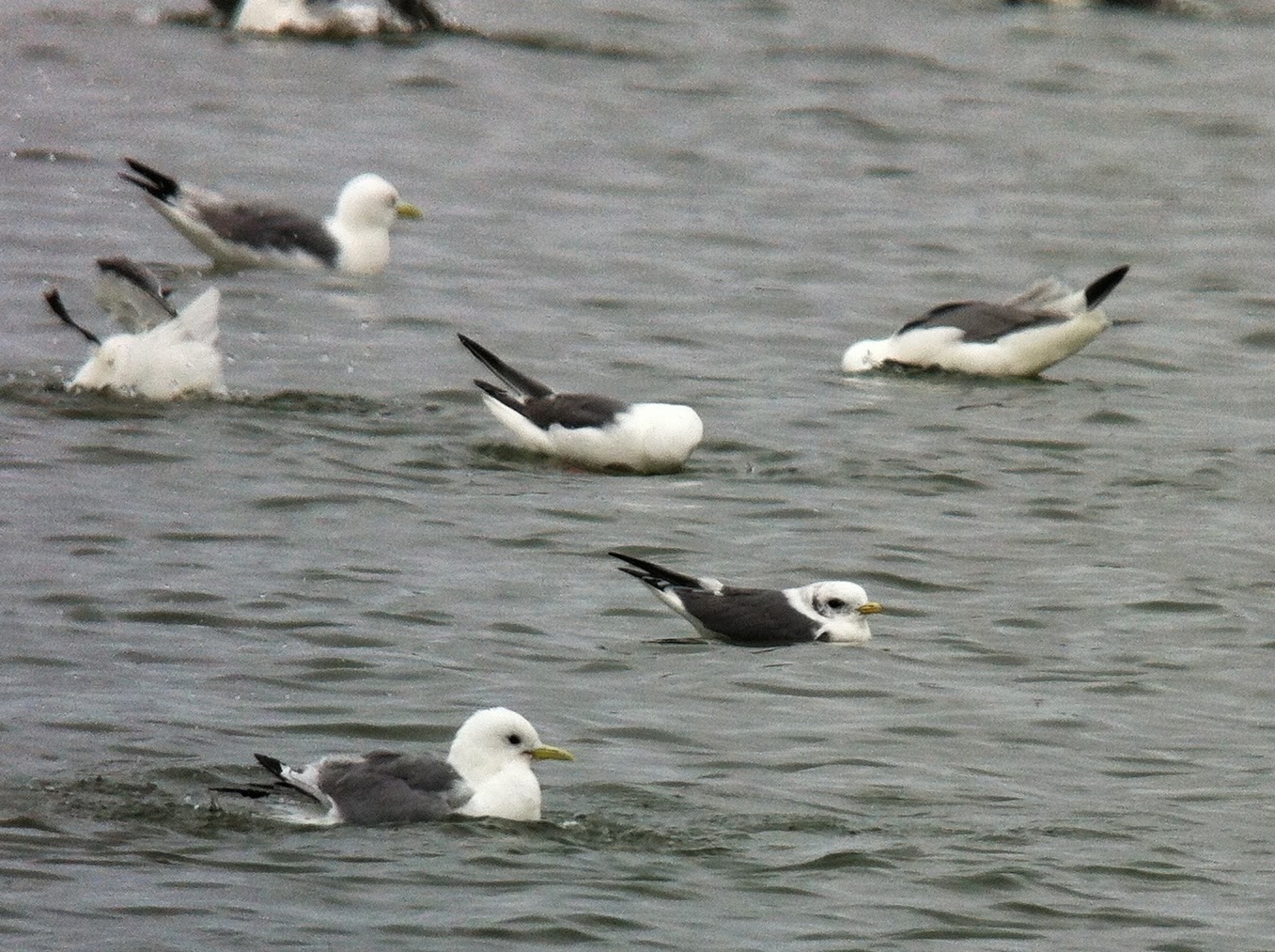It’s mid-July, one of the quietest parts of the summer here
on St. Paul Island. Most of the
species have chicks or fully-fledged young by now and that makes for some
interesting birding.
For example, a check of Antone Slough yielded young of two
shorebird species. First, however,
this adult LEAST SANDPIPER acted as the bridge-keeper near the plank
bridge. I was not afraid.
A little later on, I saw a young LEAST SANDPIPER running
about. I guessed it wasn’t able to
fly yet but alas, it jumped up and few away when I continued on my route. Here's a distant pic of the little guy:
LEAST SANDPIPERS aren’t abundant breeders here; they’re
fairly uncommon. However, a much
more common breeding shorebird is the RED-NECKED PHALAROPE. Antone Slough also provided me with a quick
glimpse of one of these striking chicks swimming for cover:
I ventured up to Marunich, a beach on the north side of the
island, to see what shorebirds were feeding on the kelp. As expected, ROCK SANDPIPERS dominated
the scene; hundreds were milling about.
Here’s a view of our local umbrina
subspecies:
However, this nearby ROCK SANDPIPER caught my attention:
It was a touch smaller and much darker overall (compare this
to the previous bird). This is
likely from one of the rarer subspecies that DOESN’T breed on St. Paul.
A little farther down the beach I found a RED-NECKED STINT feeding on the kelp (just like I did there on 5
June):
This makes it my 5th day so far on St. Paul with a
RED-NECKED STINT. This bird is a
touch paler than the stint we had at Pumphouse Lake a couple of days ago and so probably a different bird.
An obvious indicator that shorebird migration is well underway
are the RUDDY TURNSTONES which still are piling onto the beaches at Marunich. I had 100+ there on my last visit.
The best shorebird habitat right now continues to be at
Pumphouse Lake. For example, up to 7 PECTORAL SANDPIPERS are present which is pretty notable. Also, the adult
SHARP-TAILED SANDPIPER is still present (9th day now). Yesterday, the LESSER SAND-PLOVER made a
quick appearance there as well although it left before some of us arrived.
In case you’re following the facial hair saga, I’m still
waiting on my lifer Gray-tailed Tattler but it literally can happen any day now. I did have two WANDERING TATTLERS today
though; one at Southwest Point and another at Antone Lake/Wall. I wasn’t the only keen pair of eyes at
Southwest Point though. The HARBOR
SEALS, which are common there, are pretty distinctive from a distance; big eyes, pale gray coloring, and periscoping-style of looking about:
Switching gears, I also spent some time around RED-LEGGED KITTIWAKES today,
mainly at Weather Bureau Lake and Tonki Point. I took this photo to illustrate how the mantle color
differs between the two species of kittiwakes; you’ll see the mantle is a touch darker on the bird in front
compared to the three behind it:
This digiscoped photo also shows the darker mantle of RED-LEGGED KITTIWAKES:
As per the norm, I’ll close with a flower picture. This particular one is called a Brook
Saxifrage. Peculiar little thing
with the red stems and small white flowers... and yet it's still a small wonder I managed to ID it:
Anyway, hopefully my next post will have some high-caliber rarity
crushage.











